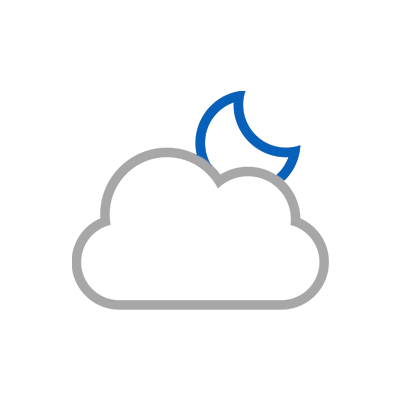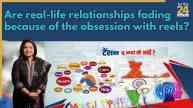The dawn of 2024 has finally arrived, marking the commencement of a new year. People around the world are reflecting on how the past year was for them. What did they lose and gain in 2023? When the page of 2023 is turned in the future, it will be mentioned that during this year, work shifted from the old building of the parliament to the new one. The year also saw success in reaching a consensus on the joint declaration between the major superpowers of the world at the G-20 Delhi Summit and making the African Union the 21st member.
In the same year, Ayodhya witnessed the descent of air services, bringing the city into the aviation network from the post-Treta Yuga era, connecting it with air travel and trains like Vande Bharat. The majestic and divine temple of Lord Shri Ram was prepared in Ayodhya this year, and the consecration ceremony of Shri Ram Lalla is scheduled for January 22. The current scenes on the streets of Ayodhya indicate that in 2024, Ayodhya will be the most significant pilgrimage site in India for devotees worldwide. In recent years, there has been an increase in the participation of devotees at every religious site in India. Have you ever thought about why people in our country undertake pilgrimage journeys?
What benefits do people gain from pilgrimage or religious journeys? Why do individuals from Kerala travel to Kashi? How does a person from Kanyakumari travel to Kashmir for the darshan of Lord Shiva? How does the connection of the western Dwarka with the eastern Imphal Valley integrate the Krishna element? In 2024, pilgrimage tourism will continue to grow, with Ayodhya showcasing the grand and divine temple of Lord Ram in front of the people. The Kashi Vishwanath Corridor and the Mahakal Corridor are already ready.
The paths to other pilgrimage sites are also becoming more accessible. Today, let’s try to understand why pilgrimage holds such significance in the Indian mindset. How has pilgrimage been influencing human beings, society, cities, states, and economies for thousands of years? How has pilgrimage played a crucial role in sociology, economics, and science, contributing to human development? These are the questions we will attempt to answer in our special program; ‘Darshan’.
In India, the connection to religion is not only through specific worship practices but has been a means to improve people’s lives. It has been a thread connecting individuals to society, providing a path of tranquility from everyday life. It has been a medium to guide people within the bounds of morality and righteousness, drawing inspiration from the life of Lord Rama. The struggle of Lord Rama is a life lesson for the entire world. The grand and divine temple of Lord Rama in Ayodhya is ready. Rama is in every fiber of India, and in Rama’s essence, there is discipline, respect, and sacrifice. It is a thought for the welfare of people. The life journey of Lord Rama, spent in exile and his encounters with sage Vishwamitra, the destruction of the demoness Tadaka, and his education in weaponry and governance, all portray a model of social and economic science. When Ravana, the king of Lanka, abducts his wife, Sita, Lord Rama, with an army of monkeys and bears, defeats the mighty Ravana. Afterward, they return to Ayodhya, presenting an ideal governance system, a model that Valmiki and Tulsidas have mentioned in their own ways.
In your mind, you might be wondering what relevance all this has since we’ve heard and read about it before. What does pilgrimage have to do with it? In reality, pilgrimage holds diverse significance in our country. A Brahmin or a student embarks on a journey to acquire knowledge. For both, the abode of the Guru, symbolizing the pursuit of knowledge, is their pilgrimage. A Kshatriya undertakes a journey to expand the boundaries, considering it a pilgrimage for connecting new territories to the kingdom. Similarly, a businessperson’s journey for trade is also regarded as a pilgrimage. Meanwhile, common householders find solace and energy by reaching the religious centers of faith. In pilgrimage, they witness the improvement of their present life and the life hereafter. For an ordinary householder, the meaning of a pilgrimage journey is distinct. In this context, every stage of Shri Rama’s life depicts a form of pilgrimage and exploration, revealing a new facet at each step.
According to an estimate, around 200,000 devotees are expected to arrive daily in Ayodhya this year. On special occasions, this number could even reach up to 500,000. After the construction of the Kashi Vishwanath Corridor, more than 130 million pilgrims visited Baba Vishwanath. In August this year, the number of devotees reaching the darbar of Kashi Vishwanath exceeded 9.56 million. Similarly, it is estimated that in the new year, there will be a significant influx of pilgrims for the darshan of Mahakal. Everything in ancient India has evolved based on thousands of years of experience, including pilgrimage. References to pilgrimage can be found in various ancient texts such as the Vedas, Ramayana, Mahabharata, and Puranas. The scriptures describe three types of pilgrimage. First, Jangam, meaning a moving pilgrimage. Second, Manas, or a pilgrimage of self-discipline and cultivation of good virtues. Third, Sthavar, represents sacred places located on the earth. Usually, common people consider significant centers of faith on the earth as pilgrimages, but the coordination between various types of pilgrimages teaches us the importance of advancing all forms of pilgrimage to promote social and cultural systems.
Ancient India had an ashram system – Brahmacharya, Grihastha, Vanaprastha, and Sannyasa. A person should not get tired of everyday life with this philosophy in mind. Possibly, to fill colors in people’s lives, festivals, and pilgrimage traditions were promoted. Temples were built as platforms to collectively resolve people’s issues. In temple campuses, people readily come together in the name of deities to help each other or to reach an agreement on shared interests. The grand temples built during the medieval period in South India testify to the significant role they played, not only in fostering agriculture but also in promoting urbanization. Pilgrimage has played a vital role in enhancing business, from boosting trade to contributing to cultural heritage. Understanding the cultural unity of India, Adi Shankaracharya established four mathas in all directions of the country. These two cultures, two languages, and two geographically diverse regions show the result of a high-minded approach – a priest from Kerala performing rituals in the Badrinath temple in the Himalayas.
In India, most pilgrimages are either located along riverbanks or amidst lofty mountains. Many pilgrimage sites are in places where one has to walk extensively to reach. In such cases, it raises the question: is there any connection between the established pilgrimage sites in India and human health? Consider this – if someone, tired of urban life, enters the Vanaprastha ashram, doctors often advise them to go to such a place where the air and water are clean. In those times when hill stations were not developed, pilgrimage provided an opportunity for people to recharge in cleaner air and water. In many prominent temples of the country, after climbing numerous stairs, devotees get the darshan of the deity. Climbing up and down stairs is good exercise. Also, clapping during bhajans and kirtans has the benefit of reducing blood pressure. Furthermore, the sound of the bell helps in dispelling negativity from the mind. Most pilgrimage sites within the country are situated along the banks of rivers. The flowing water symbolizes selfless progress for the betterment of society.
According to a study, 19% of the journeys within the country are religious, whether by bus, train, or airplane. Similarly, looking at the contribution of the temple economy to India’s economy, it is more than three lakh crores, meaning the contribution of religious tourism to GDP is 2.32%. In the 1990s, liberalization in India led to urbanization. Between the hustle-bustle of city life and the struggle for jobs, the middle class has found solace in just focusing on their work and seeking refuge in God amidst the crowd.
Possibly, in challenging situations, the divine power appears as the support of God. In such cases, city dwellers are increasingly finding faith in God and developing an interest in pilgrimage. Considering the religious, economic, and social aspects of faith, the Government is putting in concerted efforts to make the path to major pilgrimage centers more accessible to people.













